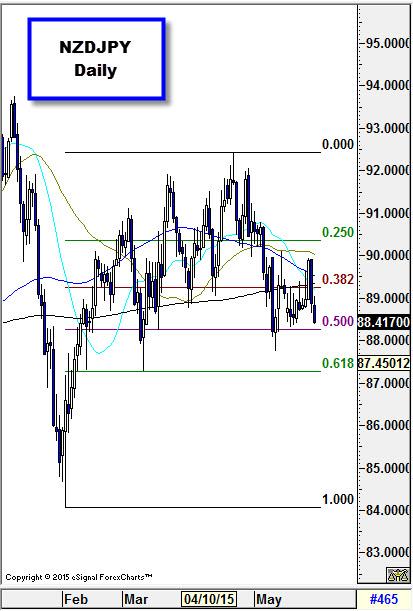![]()
Earlier in the Asia session Japan released its consumer price numbers for April. The data printed slightly above expectations, with core-CPI rising 0.3% y/y and core-core-CPI jumping 0.4% y/y (expected 0.3%) last month, slightly better than the prior month’s figures which showed adjusted increases of 0.2% and 0.1% respectively. Also, Japanese industrial production jumped 1.0% in April, after falling 0.8% in the prior month. However, these numbers aren’t game changing enough to materially impact the outlook for Japan’s economy, especially considering inflation remains well below the BoJ’s 2% target and there’s still a fairly bleak outlook for industrial production. This may be why there was only a slightly positive reaction from the yen to this numbers, with USDJPY pushing further away from its 12.5-year high around 124.45.
In NZ, the NZ dollar has been assaulted by sellers for the second day in a row. Yesterday, Fonterra lowered its payout to dairy producers by 10 cents to $4.40 a kilo and the chairman, John Wilson, stated that “world markets are over-supplied with dairy commodities after farmers globally increased production in response to the very good prices paid 12-18 months ago…” (For a full rundown of this announcement and a look at NZDUSD see my colleague Matthew Weller’s piece). This resulted in a widespread sell-off in the NZ dollar, sending NZDUSD to its lowest level in over 4 years. The commodity-backed currency attempted to regain some lost ground early in the Asia session, before soft NZ economic data spoiled the party. ANZ’s May Business Confidence Index dropped to 15.7 from 30.2 in April, its lowest level since September 2014, and its Business Activity Index fell to a two-year low. Whilst this isn’t going to be enough to force the RBNZ into a more dovish stance, it does raise even more questions about the health of the so-called standout economy.
Recent widespread yen weakness seems to have run its course. Today’s Japanese economic data reinforces our view that the JPY sell-off has run its course. Meanwhile, the recent weakness in the kiwi has helped push NZDJPY away from an important resistance zone around 90.00 and on towards some support just above 88.30; this happens to be around the pair’s 50% Fibonacci retracement level from this year’s low. Below here we’re eyeing off 87.30 – 61.8% retracement level and horizontal support.
Source: FOREX.com
Recommended Content
Editors’ Picks
EUR/USD regains traction, recovers above 1.0700

EUR/USD regained its traction and turned positive on the day above 1.0700 in the American session. The US Dollar struggles to preserve its strength after the data from the US showed that the economy grew at a softer pace than expected in Q1.
GBP/USD returns to 1.2500 area in volatile session

GBP/USD reversed its direction and recovered to 1.2500 after falling to the 1.2450 area earlier in the day. Although markets remain risk-averse, the US Dollar struggles to find demand following the disappointing GDP data.
Gold climbs above $2,340 following earlier drop

Gold fell below $2,320 in the early American session as US yields shot higher after the data showed a significant increase in the US GDP price deflator in Q1. With safe-haven flows dominating the markets, however, XAU/USD reversed its direction and rose above $2,340.
XRP extends its decline, crypto experts comment on Ripple stablecoin and benefits for XRP Ledger

Ripple extends decline to $0.52 on Thursday, wipes out weekly gains. Crypto expert asks Ripple CTO how the stablecoin will benefit the XRP Ledger and native token XRP.
After the US close, it’s the Tokyo CPI

After the US close, it’s the Tokyo CPI, a reliable indicator of the national number and then the BoJ policy announcement. Tokyo CPI ex food and energy in Japan was a rise to 2.90% in March from 2.50%.
